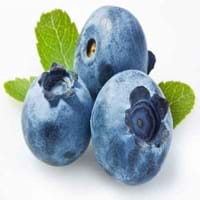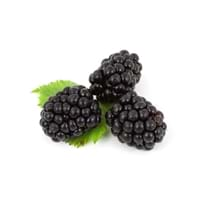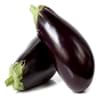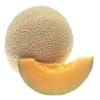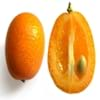Health Benefits
Anti depressant, Cancer prevention, Heart care, Increases metabolic rate, Prevents constipation
Cancer prevention, Heart care, Increases metabolic rate, Reduces stress, Treatment of dysentary, Treatment of skin Diseases
General Benefits
Anti oxidant properties, Controls blood pressure, Digestive aid, Eye care, Helps in weight loss, Strengthens bones
Digestive aid, Maintains healthy cholesterol level, Strengthens bones
Skin Benefits
Anti-aging benefits, Reduces wrinkles, Skin rejuvenation, Skin revitalization, Treatment of acne, Treatment of dark spots
Hydrates skin, Skin rejuvenation, Skin revitalization
Hair Benefits
Promotes longer and healthier hair, Regulates hair growth
Promotes longer and healthier hair
Allergy Symptoms
Abdominal pains, Anaphylaxis, Breathing difficulty, Coughing, Decrease in blood pressure, Diarrhea, Eczema, Fainting, Hives, Lightheadedness, Nausea, Runny nose, Sneezing, Swelling of mouth, tongue or lips, Vomiting, Wheezing
Facial muscle tension, Pressure in sinus, Respiratory congestion, Runny nose, Sneezing, Tingling sensation in wrist and face
Side Effects
Affects blood glucose levels, Decrease in blood sugar levels, Allergic reaction
Nausea, Vomiting, Might cause change of urine color
Best Time to Eat
As a snack in the late afternoon, Eat the fresh ones, avoid mixing with any other foods, don't eat after meal., Morning time (before lunch)
Best if taken as a breakfast (or empty stomach), As a snack in the late afternoon, Don't consume at night and before bed, Eat the fresh ones, avoid mixing with any other foods, don't eat after meal., Morning time (before lunch)
Vitamin B5 (Pantothenic Acid)
Vitamin C (Ascorbic Acid)
Vitamin K (Phyllochinone)
Phytosterol
Not Available
Calories in Fresh Fruit with Peel
Calories in Fresh Fruit without Peel
Not Available
Not Available
Calories in Pie
Not Available
Season
Summer
Spring, Summer
Varieties
Pink Lemonade, Bluecrop, Bluejay, Blueray, Bonus, Duke, Elliott, Jersey, Nelson, Northland, Patriot, Sierra, Spartan, Northcountry, Northsky and Premier and Climax
Prime Ark, Prime Jim, Illini Hardy, Kiowa, Shawnee, Apache, Arapaho, Chester, Hull, Natchez, Navaho and Triple Crown and Von
Color
Blue, Indigo
Purplish black
Inside Color
Greyish-white
Magenta
Origin
North America
Asia, Europe, North America, South America
Soil Type
Porous, Well-drained
Well-drained
Climatic Conditions
Cold
Dry, Warm to hot climate
Facts about
- National blueberry month is July as blueberries are harvested in July.
- They are the official berries of Nova Scotia, Canada.
- Blueberries are used as natural food color and can protect you from memory loss.
- There are around 2000 varieties of blackberries throughout the world.
- 80-85 degrees is the ideal temperature for its production.
- Leaves of blackberry tree are used to treat sore throats and mild inflammation of the gums.
Top Producer
United States of America
United States of America
Other Countries
Canada, Germany, Netherlands, Poland
China, New Zealand, Serbia, South Africa
Top Importer
United States of America
United States of America
Top Exporter
Chile
Mexico
Botanical Name
Vaccinium myrtillus
Rubus Fruticosus
Synonym
Not Available
Rubus Millspaughii or Rubus Laciniatus
Subkingdom
Tracheobionta
Tracheobionta
Division
Magnoliophyta
Magnoliophyta
Class
Magnoliopsida
Magnoliopsida
Subclass
Dillenhidae
Rosidae
Family
Ericaceae
Rosaceae
Species
V. myrtillus
Rubus fruticosus
Compare Blueberry and Blackberry
It is important compare Blueberry and Blackberry as both the fruits have a different nutritional value. Their comparison can be done on the basis of their vitamin and mineral content, calories, benefits as well as characteristics, making it easier for us to choose the best fruit for our diet. Their general health benefits are as follows:
Blueberry Benefits: anti oxidant properties, controls blood pressure, digestive aid, eye care, helps in weight loss and strengthens bones.
Blackberry Benefits: digestive aid, maintains healthy cholesterol level and strengthens bones.
Fruits are also used as a remedy for various hair problems. The hair benefits of Blueberry are: promotes longer and healthier hair and regulates hair growth and hair benefits of Blackberry are: promotes longer and healthier hair. Some fruits are known to cause allergic reactions. The allergy symptoms of first fruit are: abdominal pains, anaphylaxis, breathing difficulty, coughing, decrease in blood pressure, diarrhea, eczema, fainting, hives, lightheadedness, nausea, runny nose, sneezing, swelling of mouth, tongue or lips, vomiting and wheezing and the symptoms of second fruit are: facial muscle tension, pressure in sinus, respiratory congestion, runny nose, sneezing and tingling sensation in wrist and face. Get sorted Blueberry vs Blackberry comparison with the help of fruit comparison tool by fruitvs.com.
